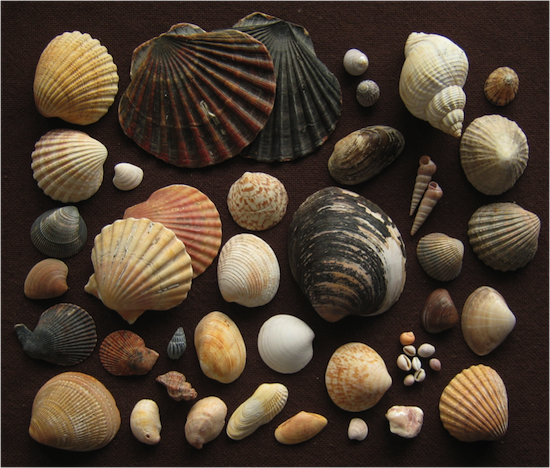
Bivalvia Notes

The Bivalvia comprise a class of marine and freshwater molluscs that have laterally compressed bodies enclosed by a shell consisting of two hinged parts. They have no head, and they also lack a radula. Bivalves include clams, oysters, cockles, mussels, scallops, and numerous other families that live in saltwater, as well as a number of families that live in freshwater. The majority are filter feeders. The gills have evolved specialised organs for feeding and breathing. Most bivalves bury themselves in sediment, where they are relatively safe from predation. Others lie on the sea floor or attach themselves to rocks or other hard surfaces. Some can even move around through the water by snapping their shell open and shut to swim. Not all bivalves still have a shell though; some have evolved a reduced shell or have completely lost the shell.
The first occurrences of Bivalvia are found in Early Cambrian deposits, but it was not until the Early Ordovician that bivalve diversification, both taxonomic and ecological, exploded in the fossil record. During the Early Ordovician there was a great increase in the diversity of bivalve species and the dysodont, heterodont and taxodont dentitions evolved. By the early Silurian, the gills were becoming adapted for filter feeding and during the Devonian and Carboniferous periods siphons first appeared which, with the newly developed muscular foot, allowed the animals to bury themselves deep in the sediment.
By the Permian-Triassic extinction event 250 million years ago, bivalves were undergoing a huge radiation of diversity. The bivalves were hard hit by this event but re-established themselves and thrived during the Triassic period that followed.